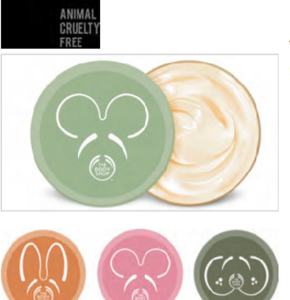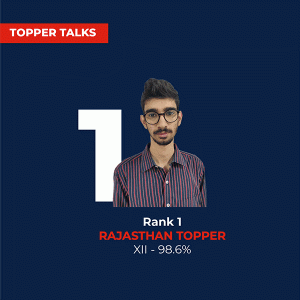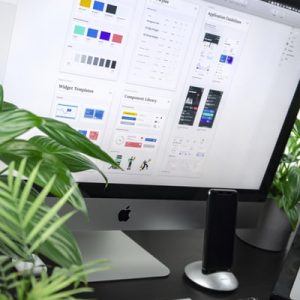How relieved do you feel when there are 2-3 images on a page in your textbook? Does it make it easier for you to concentrate on your studies?
Don’t you like to add some GIFs or infographics in your presentation to not make it look dull? We know you do!
This process through which you can concentrate or be engaged more is known as visual communication design. We are here to convince you how understanding graphics can help you choose a career path you love. Curious? Read on!
What is visual communication design?
We are pretty sure the first thing you would have thought of is what is design communication.

Communication design uses visuals and graphics to convey a message. Visual communication design can be understood as a process that combines art and technology. Let’s say you want to grab your readers’ attention, instead of using a still or text-only image, you can use animations to make the process more engaging.
The best part about visual communication design is that you’ll be able to evoke emotions in your audience and deliver your message more effectively. What’s more convincing? The significance and results that you’ll get.
What is the significance of visual communication?
Fun fact: About two-thirds, i.e. 67% of people understand information better when communicated visually.
Visual communication design ensures that an individual doesn’t deviate from the message and retains the information that is shown to them.
There are many benefits of using visual communication. For example, when your company is pitching its ideas to a customer, adding visual aids can help you to explain the logistics better. Similarly, a website that has a combination of infographics and text, is likely to be more attractive to customers.
Adding visual elements is beneficial because:
- Graphics communicate a clear story.
- Infographics help build trust and credibility.
- Quicker and easier to acquire new knowledge.
- It sparks memories of a concept.
- Easier to retain than text information.

As you would know, people these days are spending time-consuming more on visual media through social media channels like Instagram, Twitter, Pinterest, etc. Hence, using visual communication design becomes more necessary. Now that you know how important it is, let’s look at its many advantages that will reap great results!
What are the advantages of visual communication design?
People tend to remember 80% of what they see in comparison to 20% when they read. This is just one of the reasons why businesses are focusing more on visual communication design. Let’s find out more!
The advantages can be seen as follows:
-
Delivers information more directly
Information that requires more effort to retain should always be communicated through some visual elements, such as statistics. At one glance, the person can identify what’s lacking and what might be required of them. The information will be understood instantly and would make your point clear.
-
It is flexible as compared to verbal communication
A picture can be understood by anyone despite their differences in culture, geography, language, ethnicity, etc. Movies and series are usually appreciated by people across the world despite differences in language because the message it delivers is comprehensible. Hence, visual elements will let you communicate with a diverse audience persuasively.
-
It is attention-grabbing
As mentioned before, visual retention is much higher in people. Instead of long paragraphs and other details, shorter paras, relevant images, and animation will grab a viewer’s attention. Hence, you would have noticed how facial expressions are more receptacle than long descriptions.
-
Increases credibility of a message
A washing brand advertising that their product cleans the best will make people look their way, but people will still not trust it. However, once they see a video of the washing powder working its magic, ta-da, they’ll be attracted to the brand instantly. Visual elements usually reinforce the credibility of a brand’s identity.
-
Saves time
If given the chance, would you read a 300-page long book or watch a 2-hour movie? The latter sounds more interesting, doesn’t it? Individuals usually prefer to gain information through visual mediums like documentaries, graphs, etc. instead of reading as it saves a lot of their time.

It’s hard to find an argument as to why visual communication design doesn’t work for people. Not only is it good to be on the receiving end of the process, but even a career as a visual communication designer is amazing!
We understand your next question is going to be, what’s the scope of visual communication?
To answer that, visual communication design salary usually ranges from ₹3.5 lakhs to ₹13.4 lakhs. The growing usage of social media for businesses furthermore increases the demand for visual communication.
With a degree in visual communication design, you can pursue the following positions:
- Graphic designer
- Website/ Application designer
- Advertising Professional
- Video Editor
- Design director
- Communications manager
- Photojournalist
- Art director
- Audiovisual services coordinator
And many more. Many companies look for a visual communication designer to work with the content and marketing team to deliver assets that align with the brand personality. Your position will mostly require you to develop visual guidelines, package designs, logos, graphic elements, etc.
As a visual communication designer, you’ll need to have various skill sets which will help you to understand the brand better, ideate campaigns, and create advertising strategies accordingly.
How can ISDI help:
If you have made it till here, it’s likely that you are intrigued about visual communication design. There is no one better than us to help you with that!
ISDI offers various design programs such as Strategic Design Management, Product Design Fashion Design, Fashion Communication and Styling, Interior Design and Strategic Design, Communication Design, and Management. Pursuing one of the degree programs, that is, Bachelors in Design (B.Des) – 4-year program or Postgraduate In Design (PGDI) – 11 months program. Either of the programs is an alternative to a career in fashion and design.
The ISDI campus is located in the business district of Mumbai, the commercial center of India. ISDI consists of a curriculum that is based on that of the Parsons School of Design, experienced and industry-leading faculty, and practical project-based training, all situated on a state-of-the-art campus. ISDI is just the right place for someone looking to start a career in design.









